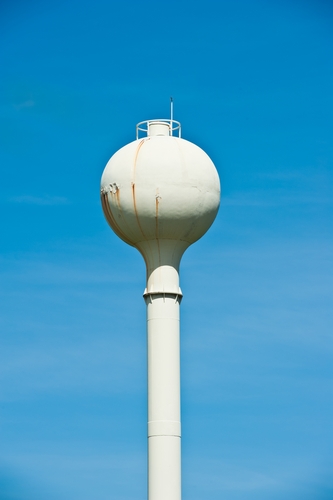
In the past, this blog has written about the issue of water shortages, and how they can effect data centers, particularly those located in dry environments. These facilities typically depend heavily on clean water for cooling purposes. However, as officials in Bluffdale, Utah, can attest, sometimes these water needs can be unpredictable.
According to a recent report by Fox 13 Salt Lake City, the National Security Agency's data center at Camp Williams, near Bluffdale, has been a significant water customer since 2012—and it isn't even finished yet.
Public records show that the center used 3.8 million gallons of water in January 2012, only 58,000 gallons in April 2012 and 6.2 million gallons in July 2013. On average, Bluffdale City Manager Mark Reid said that the facility uses between two to four million gallons each month.
Anyone who is familiar with the facility probably wouldn't be surprised by these figures—after all, Forbes reported last year that the data center sits on 247 acres of land and consists of 1.2 million square feet of enclosed space. Presumably, the data halls are massive, and since the entire facility is water cooled, it will present a major burden on local water supplies.
Even with water recycling efforts (the data center returns its waste cooling water to Bluffdale which uses it for non-potable applications such as watering grass in the City's parks) the potential for significant impact remains. When construction ends and the facility is fully operational, it will still use an estimated 1.7 million gallons per day.
The issue of water consumption represented by the NSA's Utah facility is faced by every data center that utilizes water based evaporative cooling. Even efficient systems can still require significant volumes of make-up water to replenish losses due to evaporation and water that is purposely drained off to control impurities in the system.
According to Paula Selvidge, a Certified Data Center Professional with Pergravis, a Tampa, Florida data center consulting firm, the amount of fresh water used by data centers can be minimized. "In those areas where reclaimed water is available this treated waste water can be an excellent alternative to fresh water drawn from wells, lakes or rivers" said Selvidge. "While some supplemental treatment may be required to prevent damage to cooling towers and heat exchangers, reclaimed water is still often cheaper and far more environmentally friendly than using fresh water."
And, in fact, this strategy is being used by the NSA at its new Ft. Meade, Maryland High Performance Computing Center-2 facility where the 600,000 square foot data center will take a different approach to removing waste heat from its Utah counterpart. While still utilizing water based air conditioning, the Agency has elected to cool the facility utilizing treated waste water supplied by neighboring Howard County's Little Patuxent Water Reclamation Plant.
The use of treated waste water has several advantages over the use of fresh water. First and foremost recycled water eliminates the stress on the local aquifer. Since reclaimed water has already been used at least once and is supplied from a treatment plant, no addition water is drawn from wells or reservoirs. Secondly, reclaimed water is usually less expensive than fresh water thereby reducing data center operating expenses.
The best strategy to water savings, however, is to ensure that good data center cooling efficiency practices are followed. Bypass air flow should be eliminated wherever possible; containment used if feasible, CRAC units properly maintained and related cooling infrastructure regularly serviced. Also, current ASHRAE standards should be followed to raise data center temperatures and minimize the amount of cooling capacity that is needed to support data center operations. Finally, energy efficient enterprise hardware that minimizes power consumption will reduce thermal loads at the source.
By aggressive managing cooling requirements and reducing thermal loads, significant water savings can be achieved.

